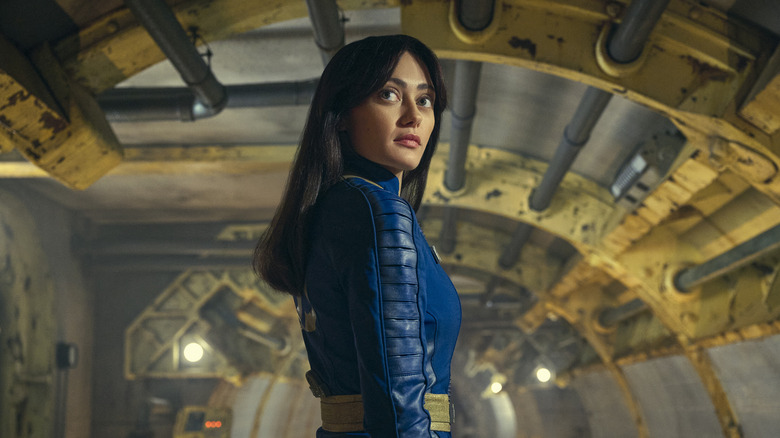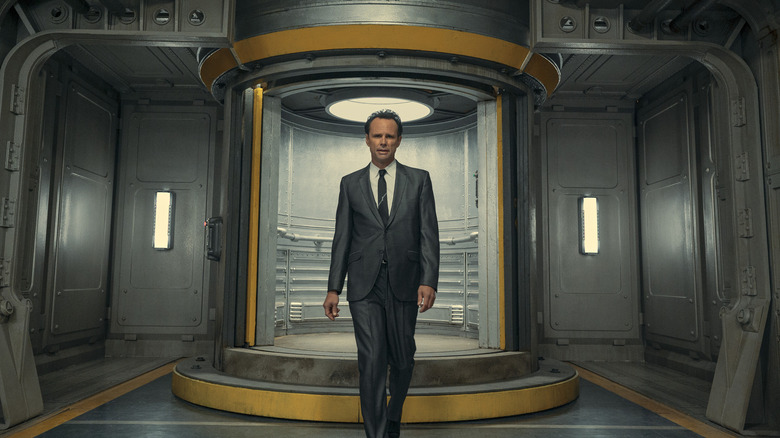Fallout: The Dark Secret Behind The Vaults Explained
Contains spoilers for "Fallout" Season 1, Episode 1 — "The End"
After Amazon Prime Video's "Fallout" series opens with a nuclear apocalypse that doubles as the Ghoul's (Walton Goggins) origin story, Episode 1 spends much of its time introducing the good people of Vault 33. As a gigantic fallout shelter, it's one of the few places where relatively normal — if somewhat claustrophobic – life still seems possible. Unfortunately, the inhabitants' relative bliss comes to a quick and nasty end when raiders posing as visitors from the adjacent Vault 32 attack and abduct Hank the Overseer (Kyle McLachlan). If the viewer is familiar with the source material, this early twist comes as no surprise. After all, the Vault system in the "Fallout" video games is essentially a massive series of deadly traps.
Vault-Tec Corporation markets its famous Vaults as safe and comfortable ways to survive the end days, but in reality, only a fraction of these shelters are as secure as advertised. Apart from the occasional control bunker, pretty much every Vault is rigged with a unique scientific, social, or medical experiment that's meant to provide information on how humans can withstand the shadowy Enclave faction's true endgame — a spaceship designed to evacuate cherry-picked survivors to start over on another planet. Because the Vaults are little more than a means to an end, this mass human testing can be incredibly cruel and often turns the Vault into a sealed microcosm of paranoia, pain, and horror.
The Vaults get creative with their terror
Being locked inside a huge bunker would be creepy enough even without any extra elements of mayhem, but some of the experiments they hide bring things to a whole other level. Consider Vault 11, where the central computer uses threats of total destruction to force the inhabitants to sacrifice one person per year ... and by the time the Vault dwellers find out this is a bluff, there's only a handful of people left.
More low-key but equally horrifying is Vault 92, which functions perfectly normally unless you count the constant subliminal messages and white noise that cause everyone to lose their minds. Of course, there are also more traditionally awful research Vaults, where the unwitting inhabitants are subjected to things like radiation or mutating viruses, with predictably horrible results.
Against this background, seasoned "Fallout" veterans may not be surprised to discover that no matter how chipper Lucy (Ella Purnell from "Army of the Dead") seems, the show's Vaults have seriously dystopian vibes from the very first episode. After all, the human spirit shouldn't be contained — especially in a Vault-Tec construct.

